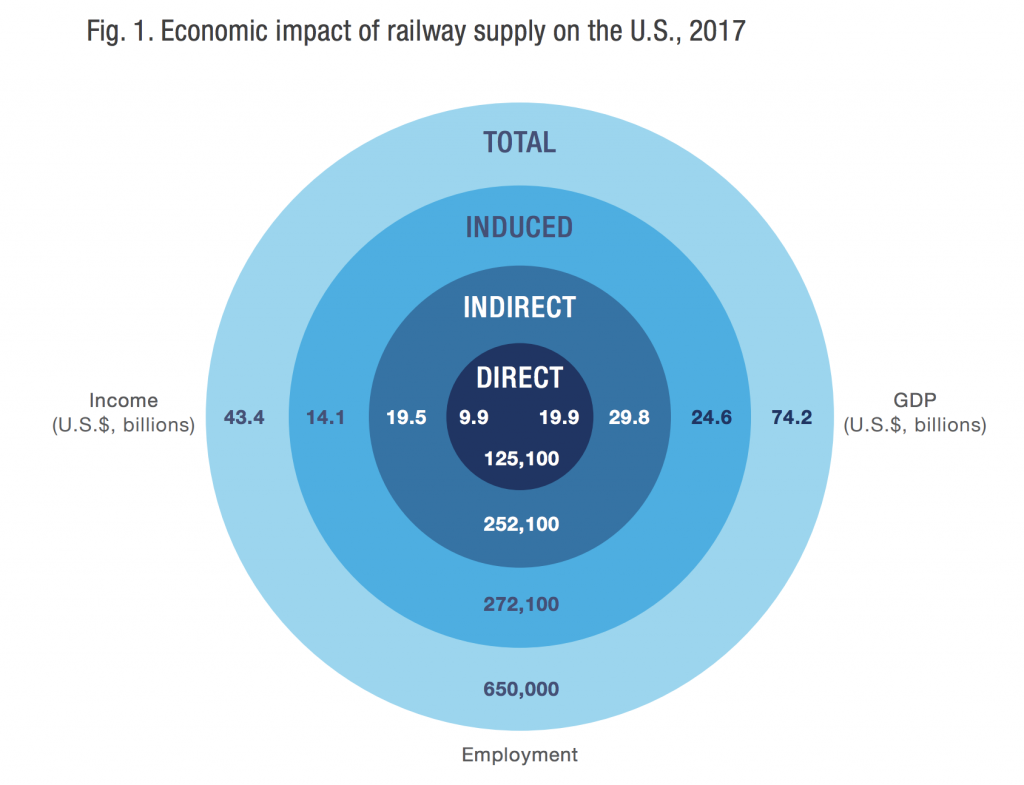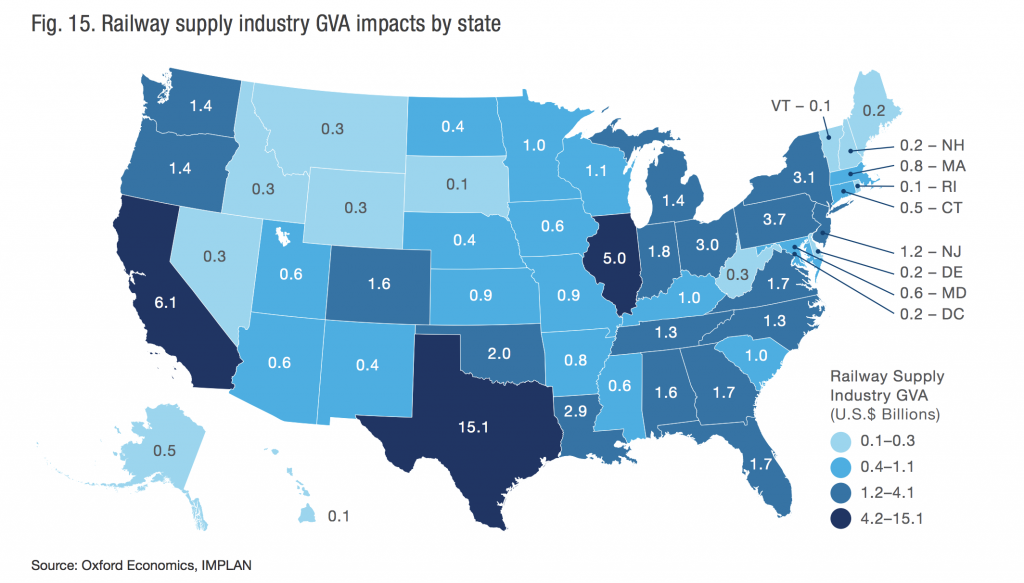Washington, DC — America’s rail suppliers — which produce everything from signals, track and ties to the advanced tech used for PTC — contributed $74.2 billion to U.S. gross domestic product (GDP) in 2017, according to a new study from Oxford Economics, an independent global advisory firm that specializes in economic forecasting and modeling.

The North American freight rail network is the backbone of our economy — driving growth for American communities and companies and connecting us to markets across the nation and worldwide. This study helps demonstrate the full depth and breadth of rail’s impact and how important railroads and their suppliers are to jobs and quality of life all across the nation.
In addition to supporting America’s railway system, “the railway supply and manufacturing industry is essential to the national economy — generating value for the economy, stimulating jobs, and contributing taxes,” the study says, citing a host of impressive new numbers based on 2017 data. Put into context, if the rail supply industry were represented as a U.S. city, it would rank 47th (between Louisville, KY and Jacksonville, FL) in terms of its annual GDP contribution.
Jobs are another area where rail suppliers have a significant national footprint. With more than 125,000 direct employees, the industry supports some 525,000 additional workers in the wider economy, “either in the supply chains of railway suppliers or through the wage spending of those employed by the firms themselves or their supply chains,” according to the study. In other words, every rail supply job supports 4.2 jobs across the economy.
The study was commissioned by the Railway Supply Institute (RSI), Railway Systems Suppliers, Inc. (RSSI), the Railway Tie Association (RTA) and the Railway Engineering-Maintenance Suppliers Association (REMSA), which collectively represent nearly 4,000 rail supply companies.
“This study is the first of its kind to reveal the power and contribution of the railway supply industry that is driven by investment in our nation’s railroads,” said RSI President Mike O’Malley. “The results tell a powerful story highlighting the benefit of public policies that support continued growth in both the freight- and passenger-rail sector.”

While it demonstrates the broad impact of the rail supply industry across the U.S., the study also points to suppliers’ outsized impact in Southwest states ($18.1 billion), the Southeast ($15.9 billion) and the Great Lakes ($12.3 billion). Texas, California and Illinois take the top three spots for states impacted by the thriving rail supply industry.
The authors also underscore the economic imperative of “preserving free and fair markets” in a case study included in the report.
“One of the key drivers for this success has been the ability of companies and industries to integrate their supply chains across the continent to maximize efficiencies, costs, and access to resources — and railroads and rail suppliers have played an important role in this… Manufacturers of railway supply products — locomotives, railcars, maintenance of way equipment— often source components from all three NAFTA nations, sustaining thousands of job across the continent.”
Overall, this study is further confirmation of freight rail’s positive economic impact. Another wider analysis of the industry has shown that it supported 1.5 million jobs and generated $274 billion in economic in 2014.


